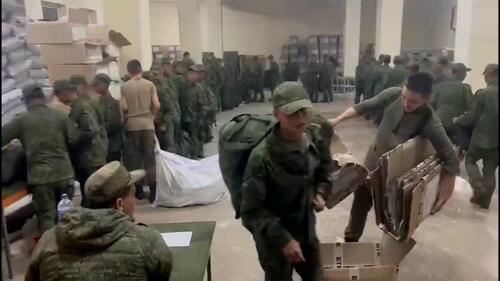For the first time in decades, the north of the Indian subcontinent is at relative peace internally, offering a tremendous opportunity to the Indian State. But first up, for the purposes of this argument, both definitional clarity and two clear caveats are important.
By the northern part of South Asia, I am referring to the arc from Kashmir through the Himalayan foothills, over Nepal, across the entire Indo-Gangetic plains, all the way to the outer edges of India’s Northeast, with Bhutan and Bangladesh in between. Put together, the region is home to half-a-billion people. It is also the poorest part of the subcontinent. Unless the region transforms, India’s quest to meet its development goals and global ambitions will remain a mirage.
The first caveat is, of course, that there are real external security challenges in the region and the arc of peace can easily transform into a zone of conflict. This comes mainly from two sources.
The first is China. The 20th Party Congress and the institutionalisation of the cult of Xi Jinping in the Chinese constitution leave no doubt that Beijing will continue to be externally belligerent. And, this belligerence will manifest itself across the northern arc of the subcontinent. China will push the envelope in Ladakh, interfere in politics in Nepal, seek to formally establish diplomatic ties and carve out a border deal with Bhutan, eye Arunachal Pradesh, and retain leverage over insurgent groups in the Northeast — all to keep India off balance. The second external challenge comes from Myanmar, where an unwise, undemocratic and brutal military junta has reversed the constitutional arrangement of the past decade and deepened ethnic discontent, leaving India’s eastern frontier volatile.
The second caveat is that this is not an argument about the nature of internal democracy. The democratic deficit in the Indian Union Territory of Jammu & Kashmir, the annual turnover of governments in Nepal, rising polarisation in north India, and both the authoritarian turn and Islamist radicalism in Bangladesh are issues that merit attention and can pose serious challenges. In addition, sporadic violence will continue to take place.
But with these caveats in mind, turn to what’s working in the region at the moment. And for this, it’s important to first recall what was not working.
Go back to the 1990s. Kashmir was up in flames. Punjab was just about recovering from a brutal Khalistani insurgency. Cross-border terrorism had begun rearing its head in north Indian cities. Bihar and Uttar Pradesh (UP) were going through a social churn which saw intense and violent caste and communal conflicts. Nepal was in the middle of a civil war that cost 17,000 lives and saw hundreds of thousands displaced. Nepal and Bhutan were locked in an intractable dispute on refugees. Bhutan was worried about a potential Maoist insurgency. Bengal had political stability, but of an entirely stagnant kind, under a Communist regime. Bangladesh had become a base for militants committing terror in the Northeast. Assam was still engulfed in the embers of the anti-outsider agitation. The Naga insurgency had crippled the Indian State. Manipur had the most number of active insurgent groups.
Compare it to today.
In the mountains, while not discounting the persistent political challenges and sense of alienation, there is little doubt that violence in Kashmir has dipped. Pakistan’s ability to export terror has diminished, as India’s State capacity has increased. Nepal is at peace and has achieved constitutional stability. The Maoist challenge is over.
Down in the plains, UP has both a politically stable government and an economic policy framework aimed at industrialisation. Caste conflicts in north India, even in Bihar, are navigated within the electoral frame rather than violent battles. There remains rampant poverty, but there is also a more effective welfare architecture.
The Northeast is at relative peace, with secessionist movements at their weakest in three decades. Even in Nagaland, the ceasefire has held for 25 years, and a peace pact is within grasp. And, Bangladesh’s social development indicators remain the region’s envy.
Provincial and national governments of all stripes — in Srinagar, Shimla, Chandigarh, Dehradun, New Delhi, Kathmandu, Lucknow, Patna, Kolkata, Guwahati, Thimphu, Dhaka — have a common political economy outlook. They want investments; they aspire for industrialisation and employment generation within defined rules; they recognise the power of technology and the new economy; they want to trade with each other; and they realise the need to supplement this with care for the vulnerable.
At a time when Delhi faces its most serious continental security challenge from China, it also has an opening to integrate, modernise and transform northern South Asia. Greater connectivity, improved border infrastructure, closer economic interlinkages, easier movement of people, sub-regional mechanisms, a more relaxed attitude to regional integration than the security establishment allowed in the past, and constant political dialogue between Centre and states, among states, between states and neighbouring capitals, can aid this vision.
Investing in the region from Kashmir to Kohima, through Kathmandu and Kanpur, and viewing it as a whole rather than as disparate parts constrained by national boundaries will help fulfil Prime Minister Narendra Modi’s call for the development of the parts left behind. It will give India a stronger hand vis-à-vis China. It will incentivise neighbours to tie themselves to India’s growth story. It will encourage states to pursue links with neighbouring countries and leverage cross-border advantages. It will create an avenue for India to work with its strategic partners, from the United States to Japan, to advance economic objectives. And it will create opportunities for what is still among the most impoverished and least connected regions of the world. The political moment is ripe to build on the arc of peace, and lay the foundations for an arc of relative prosperity and security.
The views expressed are personal
















